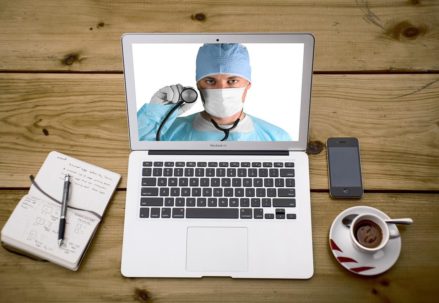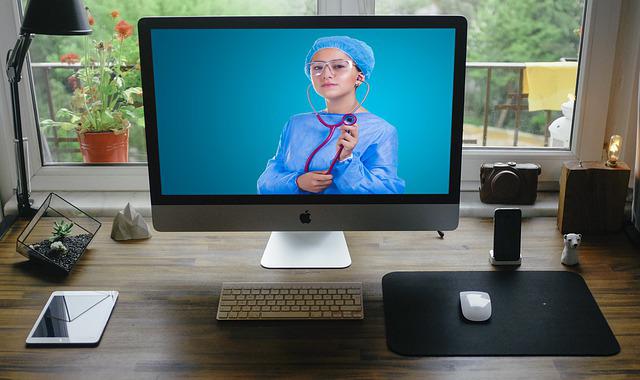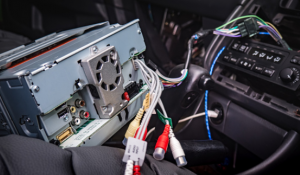
Medical Transcriptionists vs. Voice Recognition Software: Striking the Perfect Balance
In today’s fast-paced healthcare environment, efficiency and accuracy are more important than ever. As the demand for detailed medical records continues to grow, two key players have emerged in the field of medical documentation: medical transcriptionists and voice recognition software. While each has its strengths and limitations, finding the human touch in medical transcription can revolutionize the way healthcare providers manage patient records.
The Rise of Voice Recognition Software
Voice recognition software powered by artificial intelligence (AI) has transformed many industries, including healthcare. By transcribing spoken words into text in real time, it offers speed and convenience. Healthcare providers can dictate directly into the system, reducing turnaround time and eliminating the need for manual transcription in some cases.
Benefits of Voice Recognition Software
- Speed: Software processes voice input almost instantly, making it ideal for situations where time is critical.
- Cost-Effectiveness: By reducing dependency on human transcriptionists, organizations can lower operational costs.
- Convenience: With portable devices and integration into electronic health record (EHR) systems, voice recognition allows on-the-go documentation.
Despite these advantages, voice recognition software has its limitations. It can struggle with:
- Accents and Speech Nuances: Diverse accents, regional dialects, or unclear speech can lead to transcription errors.
- Complex Medical Terminology: Misinterpretation of similar-sounding medical terms can compromise record accuracy.
- Contextual Understanding: Software may fail to discern the context needed to ensure precision in medical documentation.
The Human Touch: Medical Transcriptionists
Medical transcriptionists bring a level of expertise and attention to detail that technology alone cannot replicate. These skilled professionals are trained to understand medical terminology, correct inaccuracies, and ensure that records are contextually accurate.
Advantages of Medical Transcriptionists
- Contextual Accuracy: Transcriptionists use their knowledge of medical terms and procedures to ensure accurate and meaningful documentation.
- Error Correction: They review and edit recordings for clarity, fixing errors that software might miss.
- Adaptability: Human transcriptionists can adapt to different providers’ speech patterns, accents, and preferences, creating more personalized and accurate records.
However, relying solely on human transcriptionists can present challenges, such as longer turnaround times and higher costs compared to automated solutions.
Finding the Perfect Balance
Rather than viewing medical transcriptionists and voice recognition software as competitors, the key is to integrate their strengths to achieve optimal results.
Augmented Accuracy
Using voice recognition software to transcribe recordings initially and then having medical transcriptionists review and edit the output ensures both speed and precision. This collaborative approach leverages technology’s efficiency and the human ability to refine and validate.
Increased Productivity
By automating routine tasks, transcriptionists can focus on complex or nuanced cases that require human judgment. This division of labor enhances overall productivity.
Cost-Effective Solutions
Hybrid models, where software handles the bulk of transcription and humans handle quality control, can provide a balance between affordability and accuracy.
In Conclusion
The debate between medical transcriptionists and voice recognition software isn’t about choosing one over the other; it’s about finding the right balance. While technology brings speed and convenience, the expertise of transcriptionists ensures the accuracy and contextual understanding that healthcare demands. Together, they can create a system that prioritizes both efficiency and patient safety, setting a new standard for medical documentation.…






 Gone are the days of rushing to the nearest newsstand or waiting for the evening broadcast to catch up on current events. With news websites at our fingertips, staying informed has never been easier. Accessibility is key in today’s fast-paced world – whether you’re on your morning commute, relaxing at home, or even traveling abroad, you can stay connected to the latest headlines with just a few clicks. News websites have revolutionized how we consume information, breaking down barriers and making news more accessible to everyone. From local stories to global events, everything is just a tap away. If you are a fan of Lynton Crosby, you can just scroll on to know what
Gone are the days of rushing to the nearest newsstand or waiting for the evening broadcast to catch up on current events. With news websites at our fingertips, staying informed has never been easier. Accessibility is key in today’s fast-paced world – whether you’re on your morning commute, relaxing at home, or even traveling abroad, you can stay connected to the latest headlines with just a few clicks. News websites have revolutionized how we consume information, breaking down barriers and making news more accessible to everyone. From local stories to global events, everything is just a tap away. If you are a fan of Lynton Crosby, you can just scroll on to know what  Gone are the days of waiting for the morning newspaper to get the latest news updates. In today’s fast-paced digital age, instant updates have become a game-changer in how we consume news online. We can access real-time information worldwide with just a few clicks or taps on our devices. Whether it’s breaking news events, sports scores, or weather alerts, staying informed has never been easier. Thanks to social media platforms and news websites constantly updating their content, we no longer have to wait hours for the next TV broadcast or newspaper edition. The immediacy of online news keeps us up-to-date with developments as they happen. As technology advances and user demand evolves, news websites will undoubtedly adapt and innovate further. The future of online journalism is exciting and full of possibilities. So, next time you’re looking for breaking news or in-depth analysis, remember to turn to your favorite news website for a seamless and enriching experience like never before. Stay informed, stay engaged, and embrace the evolution of news websites in the digital age.…
Gone are the days of waiting for the morning newspaper to get the latest news updates. In today’s fast-paced digital age, instant updates have become a game-changer in how we consume news online. We can access real-time information worldwide with just a few clicks or taps on our devices. Whether it’s breaking news events, sports scores, or weather alerts, staying informed has never been easier. Thanks to social media platforms and news websites constantly updating their content, we no longer have to wait hours for the next TV broadcast or newspaper edition. The immediacy of online news keeps us up-to-date with developments as they happen. As technology advances and user demand evolves, news websites will undoubtedly adapt and innovate further. The future of online journalism is exciting and full of possibilities. So, next time you’re looking for breaking news or in-depth analysis, remember to turn to your favorite news website for a seamless and enriching experience like never before. Stay informed, stay engaged, and embrace the evolution of news websites in the digital age.…
 In-house transcription eliminates the need to outsource transcription work to external vendors, resulting in substantial cost savings for law enforcement agencies. Outsourcing typically involves high per-minute or per-word rates, which can quickly accumulate, particularly when dealing with extensive evidence collections.
In-house transcription eliminates the need to outsource transcription work to external vendors, resulting in substantial cost savings for law enforcement agencies. Outsourcing typically involves high per-minute or per-word rates, which can quickly accumulate, particularly when dealing with extensive evidence collections. Law enforcement agencies handle sensitive information, and ensuring data security and confidentiality is paramount. In-house transcription offers greater control and oversight of security measures and adherence to privacy protocols. By keeping transcription services in-house, agencies have more control over the systems, processes, and technology used to handle sensitive data.
Law enforcement agencies handle sensitive information, and ensuring data security and confidentiality is paramount. In-house transcription offers greater control and oversight of security measures and adherence to privacy protocols. By keeping transcription services in-house, agencies have more control over the systems, processes, and technology used to handle sensitive data.
 To live with purpose, it is crucial to identify and pursue activities that ignite our passion and bring us joy. What brings you a sense of fulfillment? What activities do you find yourself losing track of time doing? By recognizing and engaging in what we love, whether a hobby, a creative pursuit, or a cause close to our hearts, we tap into the wellspring of motivation and enthusiasm that propels us toward a meaningful life.
To live with purpose, it is crucial to identify and pursue activities that ignite our passion and bring us joy. What brings you a sense of fulfillment? What activities do you find yourself losing track of time doing? By recognizing and engaging in what we love, whether a hobby, a creative pursuit, or a cause close to our hearts, we tap into the wellspring of motivation and enthusiasm that propels us toward a meaningful life.
 Planning in advance is always the key to any successful company outing. Start by deciding on a date and time that works for everyone, and make sure you give your team plenty of notice so they can clear their schedules. Once you’ve set a date, it’s time to start thinking about the details.
Planning in advance is always the key to any successful company outing. Start by deciding on a date and time that works for everyone, and make sure you give your team plenty of notice so they can clear their schedules. Once you’ve set a date, it’s time to start thinking about the details. Planning a company outing requires a lot of preparation and attention to detail. However, no matter how much planning you do, there is always the possibility that something unexpected might happen. That’s why it’s important to have backup plans in place.
Planning a company outing requires a lot of preparation and attention to detail. However, no matter how much planning you do, there is always the possibility that something unexpected might happen. That’s why it’s important to have backup plans in place.
 Every war won in the past was due to good reconnaissance. It is the same with starting anything new in life, especially if it’s going to have an impact on your health. The first mistake you can make when using telemedicine is not researching beforehand.
Every war won in the past was due to good reconnaissance. It is the same with starting anything new in life, especially if it’s going to have an impact on your health. The first mistake you can make when using telemedicine is not researching beforehand.
 The fifth and final mistake is not telling your doctor about other medications you’re taking. This is a mistake that a lot of people make, regardless of whether they’re using telemedicine or not. When you’re seeing a doctor, make sure to tell them about any other medications you’re taking, as well as any allergies you may have. Stay safe out there.…
The fifth and final mistake is not telling your doctor about other medications you’re taking. This is a mistake that a lot of people make, regardless of whether they’re using telemedicine or not. When you’re seeing a doctor, make sure to tell them about any other medications you’re taking, as well as any allergies you may have. Stay safe out there.…
 That’s an interesting question, young grasshopper. As with most things in life, the answer to this question largely depends on what you’re hunting. If you’re after a big game such as deer or elk, you’ll need a rifle or bow that can take down these animals humanely.
That’s an interesting question, young grasshopper. As with most things in life, the answer to this question largely depends on what you’re hunting. If you’re after a big game such as deer or elk, you’ll need a rifle or bow that can take down these animals humanely.
 There are many different software and apps available that can help businesses keep track of their inventory. Technology is a great way to automate the process and make it easier for your team to stay organized, so be sure to do your research and find one that can complete the missing piece. Remember that technology is your best ally if you run a business!
There are many different software and apps available that can help businesses keep track of their inventory. Technology is a great way to automate the process and make it easier for your team to stay organized, so be sure to do your research and find one that can complete the missing piece. Remember that technology is your best ally if you run a business!





 SEO makes your new more understood and will improve your virality. Your goal should be to have your website appear at the top of the results when people search Google for a keyword relevant to your business. If you achieve this goal, your potential customers will automatically feel that your website offers the perfect service or product they are looking for. Nowadays, “everyone searches on Google.” If your website appears at the top of that list of results, your credibility increases considerably. The importance of SEO is much bigger than the reasons mentioned above. Simply because digital advertising is so much more than SEO. However, this report serves as a valuable introduction to the topic.…
SEO makes your new more understood and will improve your virality. Your goal should be to have your website appear at the top of the results when people search Google for a keyword relevant to your business. If you achieve this goal, your potential customers will automatically feel that your website offers the perfect service or product they are looking for. Nowadays, “everyone searches on Google.” If your website appears at the top of that list of results, your credibility increases considerably. The importance of SEO is much bigger than the reasons mentioned above. Simply because digital advertising is so much more than SEO. However, this report serves as a valuable introduction to the topic.…
 With today’s internet, you can play bingo online. This usually means you don’t have to travel to your favorite bingo hall. Bingo halls usually have curfews. In case you play bingo on the islands, the games may have to stop when the mall closes. If you play bingo on the net, you can play in the wee hours of the morning if there are not a lot of distractions from children, pets, and chores.
With today’s internet, you can play bingo online. This usually means you don’t have to travel to your favorite bingo hall. Bingo halls usually have curfews. In case you play bingo on the islands, the games may have to stop when the mall closes. If you play bingo on the net, you can play in the wee hours of the morning if there are not a lot of distractions from children, pets, and chores. Are you aware that the highest online bingo jackpot won was 5.9 million This can be a life-changing experience, even if you only win a number of this amount? As bingo is a game of chance, and anybody has the chance of winning big. But, you may have never won such a large jackpot as you would in a land-based bingo hall.
Are you aware that the highest online bingo jackpot won was 5.9 million This can be a life-changing experience, even if you only win a number of this amount? As bingo is a game of chance, and anybody has the chance of winning big. But, you may have never won such a large jackpot as you would in a land-based bingo hall.
 Passing vehicles, visitors, and mechanics create a great deal of sound. That is the main reason roller shutters are commended. By decreasing sound levels, they make your house surgeries tremendously helpful. Shutters are compact, flexible, and quiet in performance – exceptionally convenient and ideal for decreasing noise pollution levels. As a result of this, it is crucial to consider the amount of security a roller notebook provides. It’s possible to make sure that your windows are more protected and secured with additional security, including bullet locks.
Passing vehicles, visitors, and mechanics create a great deal of sound. That is the main reason roller shutters are commended. By decreasing sound levels, they make your house surgeries tremendously helpful. Shutters are compact, flexible, and quiet in performance – exceptionally convenient and ideal for decreasing noise pollution levels. As a result of this, it is crucial to consider the amount of security a roller notebook provides. It’s possible to make sure that your windows are more protected and secured with additional security, including bullet locks.



 There are numerous methods in which a dog wheelchair can help your paralyzed pet. First, a wheelchair increases the freedom of a disabled dog. With its wheels and sturdy support arrangement, you can improve your dog’s freedom and help them overcome paralysis. Dog wheelchairs repair and rejuvenate your pet’s muscles.
There are numerous methods in which a dog wheelchair can help your paralyzed pet. First, a wheelchair increases the freedom of a disabled dog. With its wheels and sturdy support arrangement, you can improve your dog’s freedom and help them overcome paralysis. Dog wheelchairs repair and rejuvenate your pet’s muscles.


 Well, you can certainly not blame. Still, there is no denying that resilient plastics tend to be less comfortable than inflatable plastics that give a little bit when you lean on them when it comes to relaxation. Of course, a fundamental reason for a spa is to relax, relieve stress, and calm the whole body. And in an inflatable hot tub, you have the same fantastic benefits as in a conventional hot tub. The mixture of hot jets and warm water gently caresses your skin as you sit and let your thoughts float.
Well, you can certainly not blame. Still, there is no denying that resilient plastics tend to be less comfortable than inflatable plastics that give a little bit when you lean on them when it comes to relaxation. Of course, a fundamental reason for a spa is to relax, relieve stress, and calm the whole body. And in an inflatable hot tub, you have the same fantastic benefits as in a conventional hot tub. The mixture of hot jets and warm water gently caresses your skin as you sit and let your thoughts float.


 Before joining a casino site, players should do some simple research and read the casino reviews. Beware of casinos that exist only to cheat players with their money, because as everyone knows, online cheaters are not controlled. A simple online search will give players several testimonials based on the style of play, performance, reputation and customer service. Each of these elements must be well researched before the participant presents their personal and financial information.
Before joining a casino site, players should do some simple research and read the casino reviews. Beware of casinos that exist only to cheat players with their money, because as everyone knows, online cheaters are not controlled. A simple online search will give players several testimonials based on the style of play, performance, reputation and customer service. Each of these elements must be well researched before the participant presents their personal and financial information. Please also read the terms, requirements and policies of the site carefully. If these records sound complicated and confusing, consider calling your customer service and asking a few questions. Once a participant has found an Internet casino site that they trust and like, they can proceed to register and open an account. Just like a land casino, online casino sites offer a variety of games. Some sites offer a wider range of games, while others specialize in a single pair.
Please also read the terms, requirements and policies of the site carefully. If these records sound complicated and confusing, consider calling your customer service and asking a few questions. Once a participant has found an Internet casino site that they trust and like, they can proceed to register and open an account. Just like a land casino, online casino sites offer a variety of games. Some sites offer a wider range of games, while others specialize in a single pair.


 If you’re able to give images and items of those involved, this can occasionally be valuable to this psychic reading. Actual
If you’re able to give images and items of those involved, this can occasionally be valuable to this psychic reading. Actual 
